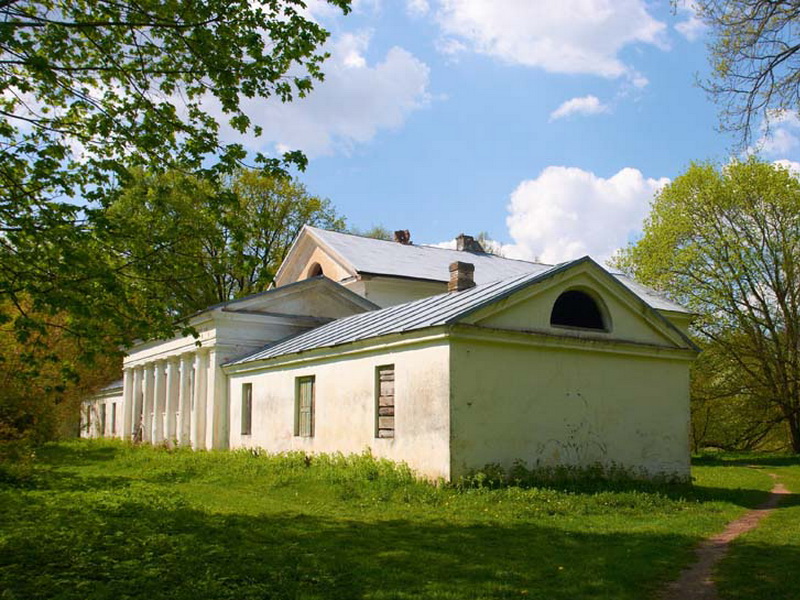History of the Complex
In the late 18th century, Count Joachim Litavor Khreptovich, who held the post of Chancellor of the Grand Duchy of Lithuania, decided to transform his family estate in Shchorsy into a model palace and park ensemble. To implement this idea, he invited leading European architects — Italians Giuseppe Sacco and Carlo Spampani, as well as the Frenchman Jakub Gabriel. In 1776, the main palace was built in the style of French classicism of the Louis XV era.
Khreptovich cared not only about architectural beauty but also actively developed the estate’s economy. He abolished serfdom in Shchorsy almost a hundred years before it was officially abolished in the state. Crop rotation was introduced, carts and wheels were produced, and cheese-making, distilling, fish farming, and brick production were developed. The estate’s products were highly valued and exported even to Prussia and St. Petersburg. Fish were bred in the ponds, and the local cheese dairies — where Swiss masters worked — produced the best varieties of cheese in the Minsk province.
Khreptovich also established one of the largest private libraries of his time, with more than 20,000 books, rare geographic maps, and historical documents. At various times, poets such as Adam Mickiewicz, Vincent Dunin-Marcinkiewicz, and Jan Czeczot worked in the library, as did historians like Joachim Lelewel. In the second half of the 19th century, an economic yard known as the “Khreptovich Muravanka” was established near the palace.
Architecture of the Complex
The main palace building was a one-story structure with a two-tiered central section. A picturesque park of over 40 hectares surrounded the palace, designed in the English landscape garden style. A system of cascading ponds added charm and elegance to the ensemble.
The estate manager’s house was located in a T-shaped building by the main pond and featured a six-column portico. Nearby stood the library — a separate building specifically constructed to house the vast book collection. Additionally, the estate included utility buildings, workshops, mills, a distillery, and cheese dairies. The entire estate was well-organized and represented a harmonious blend of architecture, nature, and progressive economic practices.
During World War I, the palace burned down and was never rebuilt. In Soviet times, the remaining buildings were used by the local collective farm. The library served first as a school and later as workshops, but today it stands empty and is gradually falling into ruin.
Excursions with a Tour of the Complex
Today, the Shchorsy Palace and Park Complex is included in the routes of many tours across Belarus. The site is notable not only for its architectural heritage but also for the rich history of the Khreptovich family and their contributions to education and agriculture. Visiting the complex offers a deeper understanding of how Belarusian nobles lived and the progressive ideas they implemented in their estates.
The tour from Minsk is especially popular and can be booked on the website Ekskursii.by. During these tours, visitors learn about the palace’s construction, its architects and owners, the renowned library, and the estate’s economic life. You can also explore the remaining buildings, stroll through the former park grounds, and admire the cascading ponds. It’s a wonderful opportunity for anyone interested in history and architecture to spend a meaningful and inspiring day.
